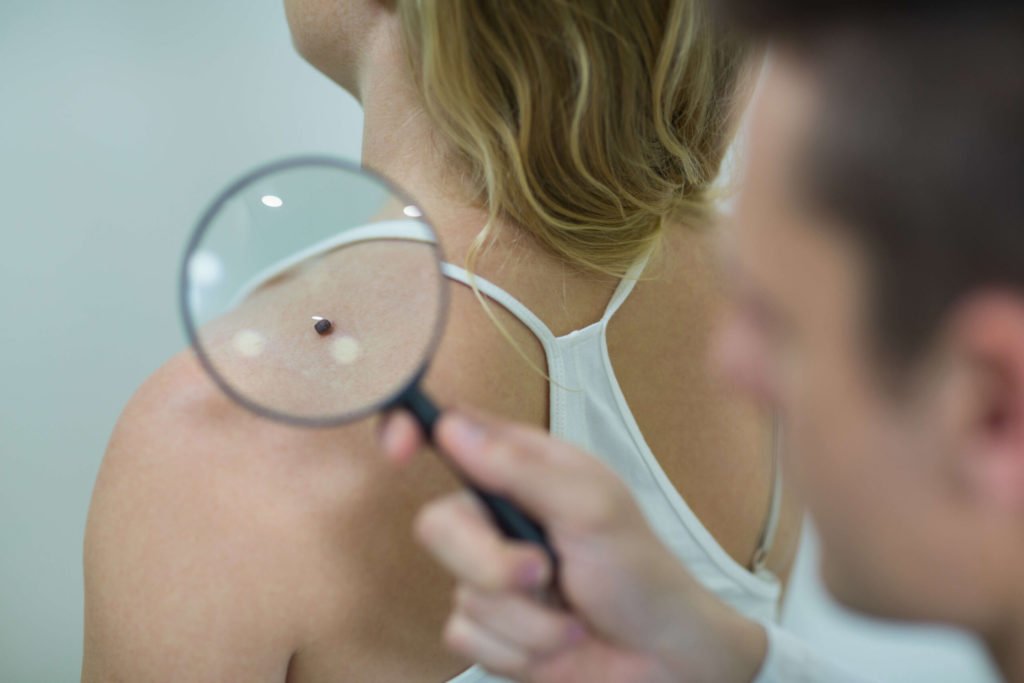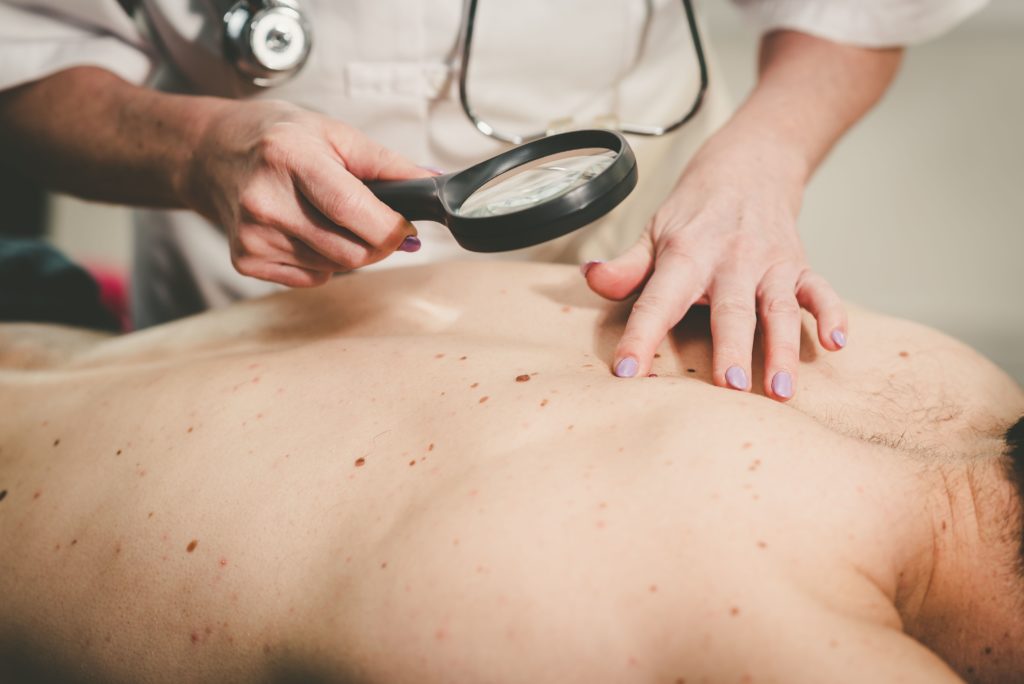Skin cancer is a common condition that affects many people. It comes in all shades, sizes and shapes. Knowing how to recognize suspicious areas of skin early is crucial for successful treatment. It occurs when abnormal cells grow out of control on the skin’s surface. There are three main types of skin cancer: Basal Cell Carcinoma, Squamous Cell Carcinoma, and Melanoma.
High Valley Dermatology will review these types of skin cancers and provide some insight about what to expect if you develop any of the types of skin cancers.

Basal Cell Carcinoma
Basal cell skin cancer is the most common type of skin cancer. It usually appears as a small, shiny, pearly bump or nodule that can be easily damaged or bleed. This type of skin cancer grows slowly and rarely spreads to other parts of the body.
Two thirds of Basal Cell Skin Cancer cases occur in sun-exposed areas while the other one third occur in areas on the body that are not exposed to sunlight, illustrating that there is a large genetic susceptibility factor to consider for BCC skin cancer. Most cases of Basal Cell Carcinoma are located on the head and neck. Other manifestations include red patches, similar to that of eczema, skin thickening or scar tissue.
Squamous Cell Carcinoma
Squamous Cell Skin Cancer is the second most common type of skin cancer, accounting for about 20% of cases. It often appears as a red, scaly patch or a raised, thickened area that may crust or bleed. This type of skin cancer can spread to other parts of the body including the lungs, esophagus, bladder and other areas. It is still considered a relatively slow-growing form of skin cancer. Although this cancer may share the same name with cells in different locations of the body, symptoms and treatment vary greatly depending on the location of Squamous Cell Carcinomas.
Melanoma
Melanoma, otherwise known as malignant melanoma, is the deadliest form of skin cancer and is responsible for the majority of skin cancer-related deaths. It typically appears as a dark, irregularly shaped mole that may be black, brown, or multiple colors. Melanoma can spread rapidly to other parts of the body if not treated early.
About 25% of melanomas develop from moles. Inspecting moles regularly can help detect cancerous lesions early and increase chances of survival. There is a helpful mnemonic to remember when considering moles.
Look for the “ABCDE”s of a mole:
- Asymmetry. If you were to draw a line down the middle of the mole would the two sides match?
- Borders. Are the edges of the mole irregular?
- Color. Does the mole have a variety of colors such as brown, tan, black or red?
- Diameter. Is it larger than the size of a pencil eraser?
- Evolving. Has the mole been changing?
If a mole exhibits any of these features, a professional should examine it more closely.
Exposure to ultraviolet light is the leading cause of melanoma. Using sun protection and limiting exposure to harsh sunlight may help reduce the risk of melanoma. Once diagnosed through a skin biopsy, if melanoma is found, treatment is typically removal through surgery. Surrounding lymph nodes may be tested for skin cancer.

High Valley Dermatology: Your Skin Cancer Specialist of Southeast Idaho
If you notice any suspicious changes in your skin, it’s important to see a dermatologist as soon as possible. A dermatologist will examine your skin and may take a biopsy to confirm the diagnosis. If skin cancer is detected, treatment options may include:
- Surgery to remove the cancerous tissue
- Radiation therapy to destroy the cancer cells
- Chemotherapy to shrink or destroy the cancer cells
- Immunotherapy to boost the immune system’s ability to fight the cancer cells
With early detection and proper treatment, most skin cancers can be successfully treated and cured. However, it’s important to continue to take steps to protect your skin and to be vigilant about checking for changes in the future.
In conclusion, all types of skin cancer are a serious condition that affects many people. By taking steps to reduce your risk and by being vigilant about checking your skin, you can reduce your risk of developing skin cancer and ensure that any skin cancer is detected and treated as early as possible.
We understand that “cancer” is a scary word. At High Valley Dermatology, we want our patients to know that we are dedicated to providing the most professional, efficient and effect care available. Our physicians and staff are kind and caring and most importantly have the highest training possible for the treatment of skin cancer is the Southeast Idaho area. Our providers each have an additional year of fellowship in Mohs Micrographic and Reconstructive Surgery to help offer or patients the least amount of skin defect paired with the highest cure rate for some kinds of skin cancers.





